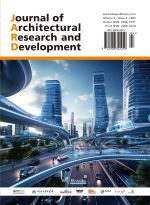Abstract
The purpose of this paper is to study the planning and design of campus plant communities from the perspective of vegetation carbon sink capacity. During the research period, based on literature review and material investigation, the quantitative calculation of the carbon sink capacity of the vegetation of the campus of the case study university was carried out using the i-Tree model, and the shortcomings of the carbon sink level of the campus vegetation community were pointed out based on the calculation results. Subsequently, with the goal of improving the carbon sink capacity, the park is oriented to the planning and design of vegetation communities, and the feasibility of the program is demonstrated with the support of the data on the level of carbon sink capacity after the implementation of the program. It is hoped that this paper can provide technical reference for the managers of universities and urban landscape departments in China, and actively promote the optimization of vegetation communities, enhance the carbon sink capacity, and promote the full implementation of the goal of sustainable development.
References
Yang H, Zhou D, Li Y, et al., 2025, Research on Plant Communities and Ecological Benefits of Chuzhou Suzhou Park Based on I-Tree Model. Modern Horticulture, 48(03): 75–77.
Xu S, Li S, Ding M, 2024, Ecosystem Service Value of Street Trees Based on I-Tree Model. China Urban Forestry, 22(03): 41–49.
Su J, 2023, Research on Ecological Benefit Assessment and Design Optimization of Park Trees Based on I-Tree Model, thesis, Beijing Architecture University.
Dang Q, Ren J, Kong Q, et al., 2025, Problems and Countermeasures of Forestry Carbon Sink Development in Jiyuan City. Modernized Agriculture, 2025(5): 29–3
Ma C, Hu J, Wei X, et al., 2025, Research Progress on Accounting and Value Realization of Carbon Sinks in Tea Plantations. China Tea, 47(5): 16–23.
Wang X, Xu M, Wang M, 2025, Eco-Efficiency Assessment of Woody Plants in 10 Greenways in Beijing Based on I-Tree Model. Garden, 42(05): 106–113.
Wei D, 2025, Research on Garden Landscape Design Under the Background of “Double Carbon”. Beauty and Age (City Edition), 2025(4): 64–66.
Wang L, He J, 2025, Biomass Allocation Pattern and Carbon Sink Potential of Wetland Pine Plantation Forest in Northern Hunan. Hunan Forestry Science and Technology, 52(2): 10–18.
He M, Zhang Y, 2025, Carbon-Neutral Actions to Enhance the Natural Carbon Sink Capacity of Puwan Industrial Park. China Strategic Emerging Industries, 2025(2): 152–154.
Ding W, Huang Y, Ouyang D, 2024, Discussion on the Planning and Design of Dual-Carbon Smart Park. Small Town Construction, 42(08): 16–22+30.
